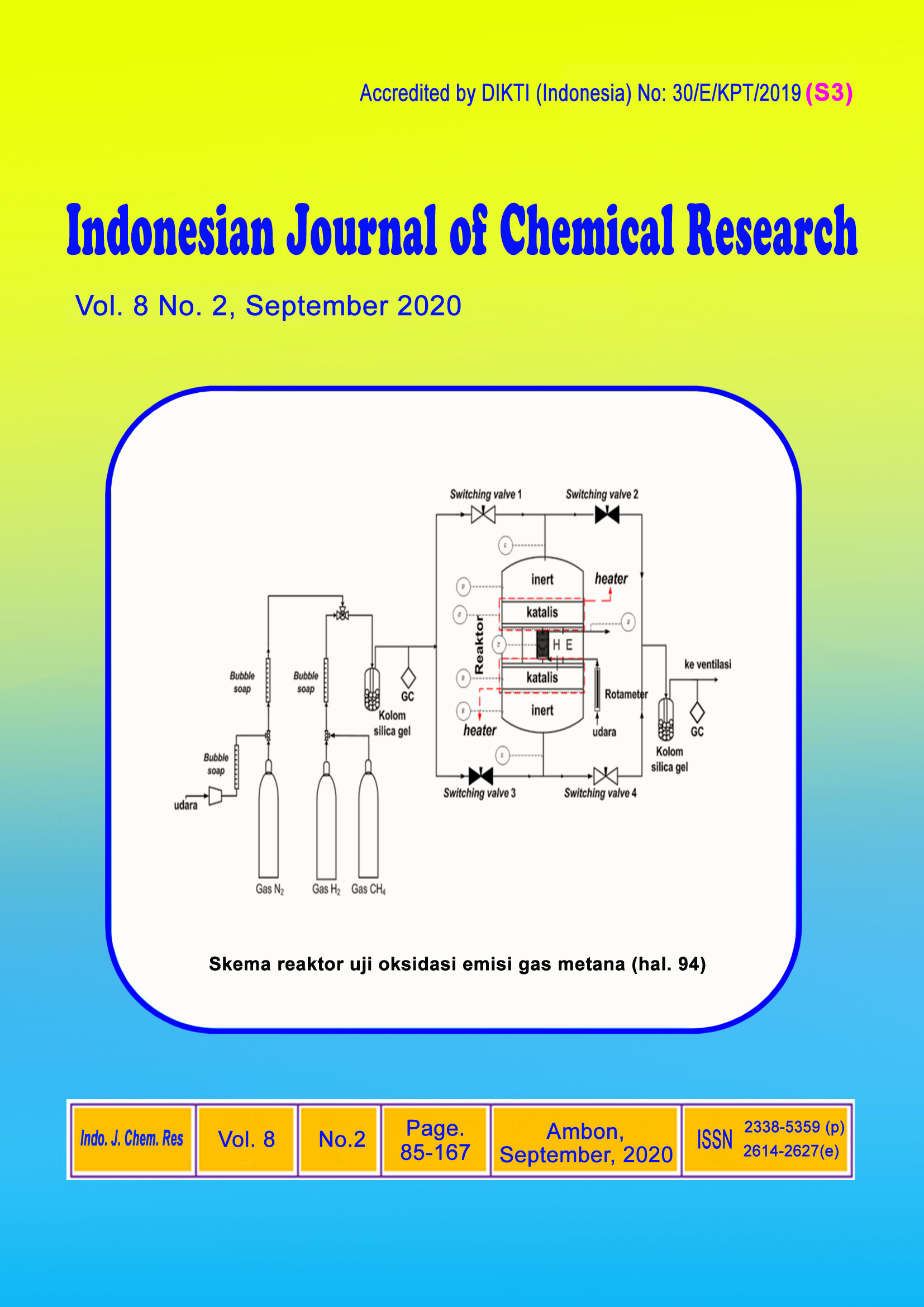Profile Analysis of Fatty Acids of Tengkawang (Shorea Sumatrana) Oil Using GC-MS and Antibacterial Activity
Abstract
The Shorea sumatrana (tengkawang) plant is endemic to Indonesia, especially in Kalimantan and Sumatera regions, which produces chemical diversity especially as a natural drugs. Specific aims to investigate both the profile analysis of fatty acid and antibacterial potential of tengkawang oil. The extract of tengkawang oil was carried out using the soxhlet extraction method. The profile analysis of fatty acid was verified by GC-MS and the antibacterial activity was evaluated using disc-diffusion method. The profile analysis of fatty acid of tengkawang oil indicated the presence of palmitic acid (17.26%), stearic acid (60.68%), oleic acid (11.98%), oleic acid chloride (1.80%), stearic acid chloride (1.86%), glycidyl stearate (1.92%), diethyl phthalate (4%), and 2-monopalmitin (0.5%). We determined the antibacterial activity by the diameter of inhibition of growth zone against Salmonella enteritidis, Escherichia coli, Staphylococcus aureus, and Bacillus cereus at a concentration of 12.5%, 25%, 50%. These were compared with standard tetracycline as positive control and DMSO was assigned negative control. It was found that the highest percentage of fatty acid in tengkawang oil is stearic acid, at 60.68%, and that tengkawang oil is an antibacterial agent with a concentration optimum at 25% with more susceptibility to Gram-positive than Gram-negative bacteria.
Downloads
Copyright (c) 2020 Diah Gusti Riski, Rico Gewana Resdy Maulana, Edwin Permana, Indra Lasmana Tarigan

This work is licensed under a Creative Commons Attribution-NonCommercial-NoDerivatives 4.0 International License.
Authors who publish with this journal agree to the following terms:
- Copyright on any article is retained by the author(s).
- The author grants the journal, the right of first publication with the work simultaneously licensed under a Creative Commons Attribution License that allows others to share the work with an acknowledgment of the work’s authorship and initial publication in this journal.
- Authors are able to enter into separate, additional contractual arrangements for the non-exclusive distribution of the journal’s published version of the work (e.g., post it to an institutional repository or publish it in a book), with an acknowledgment of its initial publication in this journal.
- Authors are permitted and encouraged to post their work online (e.g., in institutional repositories or on their website) prior to and during the submission process, as it can lead to productive exchanges, as well as earlier and greater citation of published work.
- The article and any associated published material is distributed under the Creative Commons Attribution-NonCommercial-NoDerivatives 4.0 International License.






_copy1.png)










